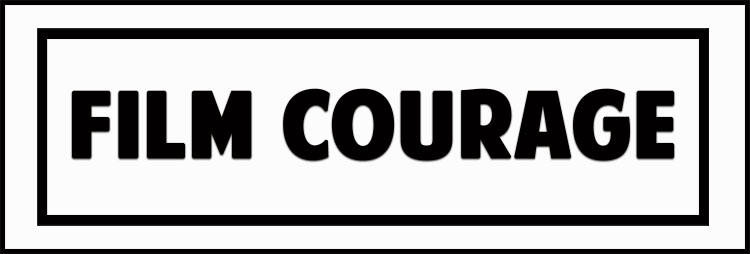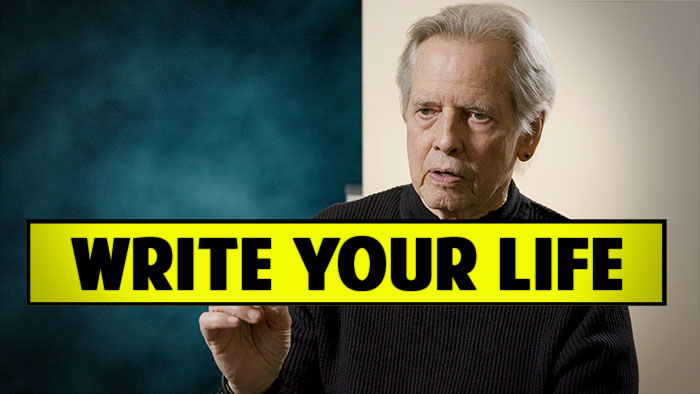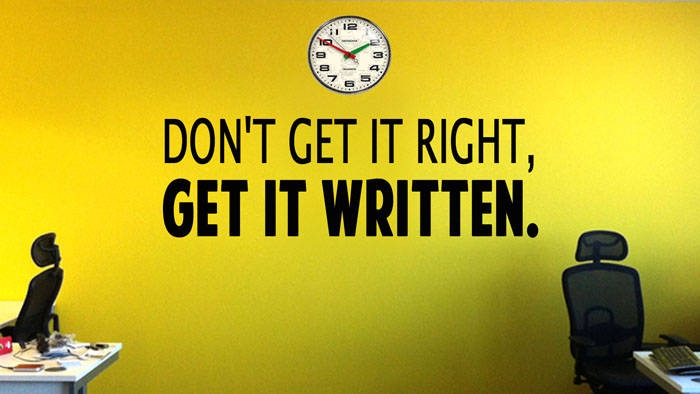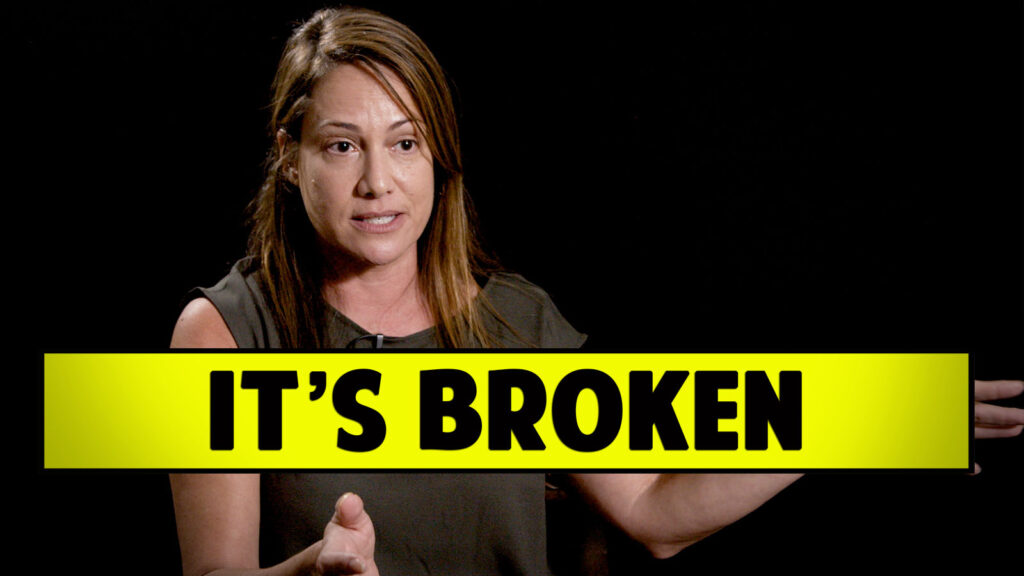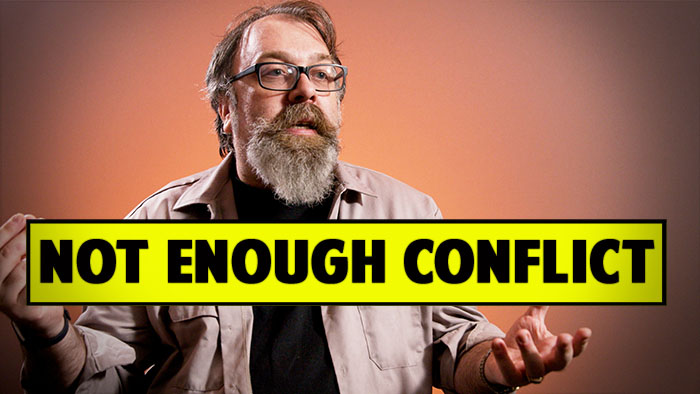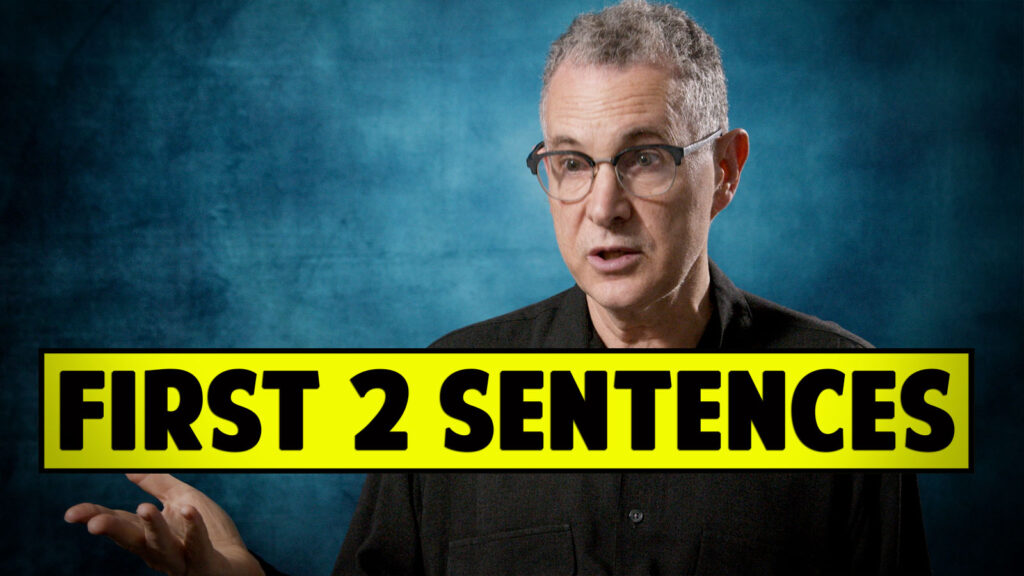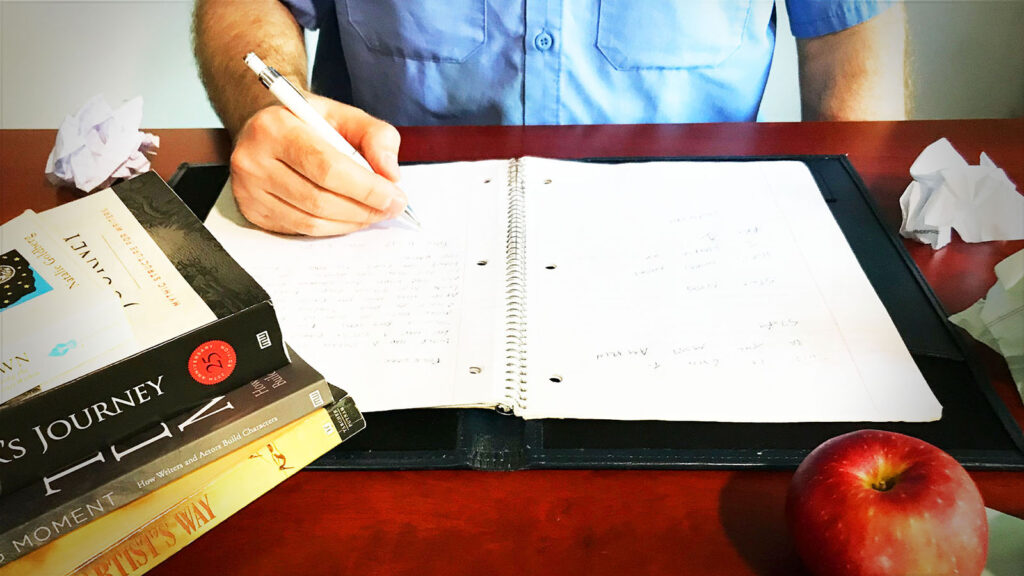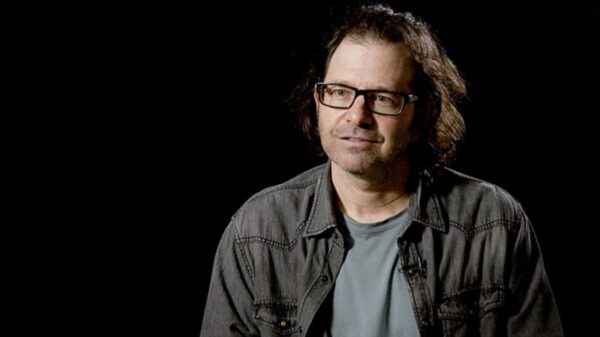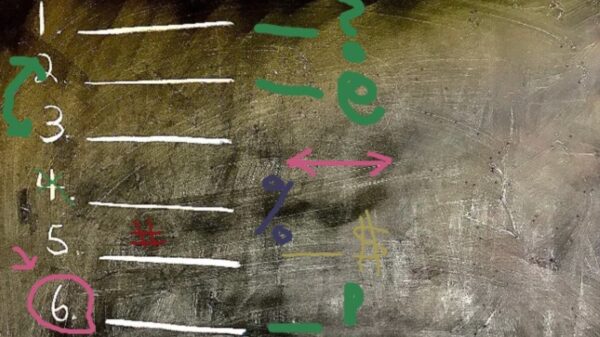
RUSS POND PRODUCER/DIRECTOR/STORYTELLER
FC: Russ, we understand you were raised around the arts and your father was a photographer. From a prior interview you mention he recommended finding a sustainable career and not become a starving artist. Did you or he witness a ‘starving-artist lifestyle‘ in another and what was your impression?

RP: My father was a professional photographer in a small Texas town. Whether school photos or wedding photos, it was most likely my dad who took them. He had his own studio in town, and I would spend everyday after school messing around in the darkrooms and playing with his camera gear. My dad knew that making a comfortable living as an artist was a lot of work. Finding that balance between art and business is not always easy, especially for artists. My dad ran two smaller side businesses and even worked a night job early in his career to keep our family afloat. So, as any good dad would do, he encouraged my brother and I to pursue the easy corporate life instead. So, we did. We became electrical engineers. It wasn’t until 16 years of the Corporate America cubicle life that I decided to pursue production as a career.
FC: We understand that you have been producing and directing corporate video projects for a variety of clients, including a handful of Fortune 500 companies. How did you begin this career and where did you learn the technical side?

RP: I worked in the corporate world for 16 years. During that time, I started dabbling in media production, both interactive and video. And, loved it! At first, it was just an expensive hobby, but then I started making money at it. The companies I worked for learned about this new hobby of mine and asked if I can do some videos for them. It was a win-win since I knew the products and branding requirements, and I was charging a fraction of what the agencies were charging. My “day job” was an engineer, but then I’d come home and produce videos in the evening. It was so much fun that I would just lose track of time. I’d often start editing something and get so into it, and then look up at the clock and see it was 4 AM.
When it came to learning the various tools like Final Cut, After Effects and Photoshop, I was self taught. I would often see a cool commercial on TV, and then spend a week re-creating the look and feel with the tools I had. I only bought new gear or software if I had a project to justify the new cost. The one thing I learned in engineering school was how to learn. So, when it came to video production and motion graphics, it was very easy for me to learn the tools and software.
FC: You’ve recently released a new E-book entitled ‘From Dream to Distribution: A Filmmaker’s Journey!’ From the book’s website, you mention embarking on your first feature film in 2006. How long had you been contemplating making a film and what held you back until this point?
 RP: I started dabbling in video production in the mid 90s, but never did any narrative films. It was always corporate stuff — commercials, product videos, training, marketing videos, etc. In 2003, I decided to make my first narrative short film, “Treasure”. And, it was a blast. After that, I decided to make 1 or 2 short films a year so I could learn how to tell narrative stories. In 2005, the perfect storm hit. That’s the year I decided to quit my corporate job and launch Top Pup Media (my video production company) full time. That same year, a short film my son and I did called “Growing Up” won the audience choice award at a film festival. With 7 short films under my belt, an audience choice award and a new production company launched, I started thinking about what it would take to make a feature film.
RP: I started dabbling in video production in the mid 90s, but never did any narrative films. It was always corporate stuff — commercials, product videos, training, marketing videos, etc. In 2003, I decided to make my first narrative short film, “Treasure”. And, it was a blast. After that, I decided to make 1 or 2 short films a year so I could learn how to tell narrative stories. In 2005, the perfect storm hit. That’s the year I decided to quit my corporate job and launch Top Pup Media (my video production company) full time. That same year, a short film my son and I did called “Growing Up” won the audience choice award at a film festival. With 7 short films under my belt, an audience choice award and a new production company launched, I started thinking about what it would take to make a feature film.

FC: How long did the process take from this 2006 point? Had Nicholas Turner already written the script?
RP: In the summer of 2006, I decided to move full speed ahead on a feature film, but I didn’t have a story. At first, I thought I would just write one, but after a couple of months of failed starts (and the realization that writing is truly a masterful craft), I decided to find a script instead. I put a query out on the web, and received 450 submissions in just one week. Nick Turner’s script, FISSURE stood out and that’s the one we decided on. He had written the script that year, but he did something that really stood out. He wrote it specifically with the budget in mind (limited cast, few locations, and minimal effects). And, it was an excellent, original story. I read the first 10 pages and thought, “What’s going on here?” Then, I read the next ten pages and thought, “What is going on?” Then it hit me: if I could capture that same mystery, this would make a great film.
FC: You had been in Corporate America for over 16+ years. How is the world of movie making different from the Corporate structure? Is there a more ‘wait-and-see’ approach with movies, where with Corporate America it is about the bottom line and company policy? Do you miss any parts of Corporate America “cubicle” life?
.jpg)
RP: Corporate life was never really that exciting. You had a job to do, and not much else. Rarely were you empowered to make a difference. The work was never that challenging (and I enjoy a good challenge), but I did learn a lot about business and marketing. The 16 years in the business world was truly helpful for me in understanding the business side of production. This experience and knowledge really paid off in both my production company and the business of movie making. Too many artists don’t understand the business side of art or they don’t partner with someone who does. So, they produce something beautiful and amazing but have no way of expressing it to the masses. Producing has become more and more comfortable for me because I do it now on a regular basis with my production company.
I don’t miss the Corporate America cubicle life at all. The lack of empowerment to make a difference was too stifling. Today, every production I do will succeed or fail because of me, and I like that! It drives me to focus and to do the best job I can do for every project that I work on. And, it’s always different. No two productions are the same. Each have their own challenges and obstacles to overcome, and I love this about production. It’s always new.
FC: We understand you almost did not shoot the film in North Texas. What was the reason? Would you shoot another feature film in Texas again?

RP: In 2006, there was a huge push on state film incentives. And both New Mexico and Louisiana had amazing incentives. So, we considered shooting FISSURE in one of those two states. But, after researching the costs to do so, we decided to stay in Texas. And, I’m glad we did. There’s a lot of amazing talent here. We recently wrapped up a second feature film called INFILTRATORS that’ll be on the market in a few months. Production is strong here in Texas.
FC: Where did you post casting notices for FISSURE?
RP: We cast FISSURE both locally and in LA. We hired a casting director to help us find our leads out of LA. Then, we hired a second local casting director to fill the smaller, local roles. We reached out to the local agencies and picked up a lot of great local talent.
FC: What closed the deal for you in terms of casting each actor? Did they do anything in particular for the reading where you said ‘this is my lead!”
RP: For my lead, James Macdonald was amazing! He recorded a custom audition in LA and sent me the tape. I watched it and said, “That’s Paul Grunning!” He had this great, cop quality that was perfect for what we needed. And, his acting resume was very impressive. I knew he would do a great job.
FC: You’ve mentioned shooting FISSURE in 18 days – what things did you do in a ‘Corman-esque,’ fast-no-nonsense style, and what did you take your time with?
RP: As with any production, time is money. The faster you shoot, the lower the cost. So, we decided to shoot this movie in 3 weeks, with each week being 6 days long. And, the days were long, sometimes pushing into 12 to 14 hour days. The challenge was staying creative without compromising quality, but we had to shoot 5 to 6 pages a day. We had a couple 8-page days that were challenging. So, we were moving fast. And, this was my first feature film as a director and producer. It was quite the learning experience.
FC: When you got on set, how prepared were you and what surprises came up that made you take a Plan B or Plan C approach?
RP: Amazingly, everything moved quite smoothly. We finished the shoot on schedule and under budget, a rarity for first-time filmmakers. The key was my team. I wish I could say it was all me, but it wasn’t. My team was amazing! I would come to the set and watch them work their magic. I’d think “Wow, I don’t really need to know everything about movie making. I just need to hire those who do.” As with any production, you’ll have surprises. You always do. That’s the nature of production. You can either freak out about it or find a solution and move on.

FC: Did at any point you have a ‘What Have I Gotten Myself Into Moment?’ or was it a dream-like 18 days? Can you tell us a story about a close-call to threatening the production that was avoided and why/how?
RP: The scariest close-calls we had were prior to production. It was the finalizing of contracts or the talent negotiations that took forever. I found that I had to cast 2 or 3 people deep for each role, and be willing to let go of my first choices to keep the production on schedule. It was painfully hard, but a necessity. We also struggled a bit with our key location. The story of FISSURE takes place in this big, creepy house, and we had found the perfect house. It was an older home. The inside walls were textured and had these dark, rich colors. It had a great look about it. The weekend before we started shooting, the owner of the house tried to do us a favor and repainted the entire inside of the house off white, covering up what made the house amazing. It was so frustrating, but the homeowner then had the paint crew come back in and paint the walls back to the way it was before. That was scary.

Production was just incredible! Each morning, I would get up at 5am and tell my wife, “I get to make a movie today!” I’d get on set all excited and giddy, and then just get into a groove with the cast and crew. We were in sync and moving through the production days with ease and creativity. Loads of fun!
FC: How closely did you stay to the script or allow the actors to put their own lines and/or emotions into what they felt worked for their characters? In either case, why did you allow this decision?
RP: We often changed lines during the blocking of a scene, but we had to stay pretty close to the script so that we didn’t break any of the science of the story. There’s a very specific structure and continuity to our story, and we had to be careful not to break it. But, the actors would often work with me on what felt awkward and what worked better when it came to lines. And, I was completely open to making it more authentic, so we often changed things on the fly.
FC: At what point did you decide to write your E-book ‘From Dream to Distribution: A Filmmaker’s Journey!’ How long did this book take to write, edit and finalize?
RP: When I first started this filmmaking journey, I started blogging my experience. I wanted to capture it for my own journals, but I started learning so much about feature film production that this information would surely help others wanting to make a feature film. That only made me want to capture the process even more. Interestingly, I started blogging before I even had a script to produce. It literally started at the dream stage. After the film, I tried quickly to turn the blog posts into a book, but really only got about 70% finished. I was right in the middle of distribution so my filmmaking story wasn’t finished. So, I shelved it and waited a few years. Then, last year when I finished my second feature film, I decided it was time to get it out.
FC: Did you share your first or second draft of your book ‘From Dream to Distribution: A Filmmaker’s Journey!’ with someone for feedback? If so, why did you pick this person?

RP: I shared my book with some of my co-producers on FISSURE to get their feedback. Being filmmakers themselves, I wanted to make sure my information was accurate and interesting. Daniel Millican said he finished the book in one setting, and he liked it. So, that was some great feedback, especially from a filmmaking peer who has 5 features under his belt.
FC: What are your thoughts on distributing content via Youtube versus traditional methods?
RP: Traditional movie distribution is really in a state of flux. The internet has changed everything. From marketing to distribution to building a fan base, everything is done on the internet. YouTube was becoming massive with billions of minutes of content. Trying to break through the clutter was near impossible. It taught me a lot about producing for specific audiences and how to build your fan base. At the time, we only used YouTube to market the film, and we did something unique by releasing the first 40 minutes of the film online broken up into 9 webisodes. It was an interesting experiment, but it did not launch the film as we had hoped.
FC: We’ve noticed that you have several behind-the-scenes videos posted on your Youtube channel (Youtube.com/user/russpond). What made you feel compelled to include these wonderful videos in your promotion of the film?
RP: The entire movie project for me was the most amazing learning experience, and in the same spirit of the eBook, I wanted to include some behind the scenes videos to help share more about this experience of producing a feature film. I also heard that behind the scenes videos are a huge distribution plus for those distributors wanting to release on DVD.
FC: Since you have a background with online marketing, how helpful has it been to think in audience-generating terms? How did those decisions factor into specific scenes for FISSURE?
RP: I wish I could say that my years of online marketing experience played a huge role in the marketing of FISSURE. But, it didn’t. During the production, I was more focused on this new journey of producing a feature film, so I didn’t spend enough time and energy in the marketing of the film. I did some, but not a lot. In my eBook, I talk specifically about the various attempts to use social media to market the film, and what worked and didn’t work. It was painful, but I learned a lot about what to do and what not to do. In my second film, INFILTRATORS, we have spent much more time and energy building our online fan base and using social media to build awareness and exposure.

FC: After the screening of FISSURE, what happened? How much buzz have you kept going on your own? How easy or difficult has it been to keep FISSURE alive after the initial buzz?
RP: There was a lot of buzz early on, as expected. FISSURE premiered at the AFI Film Festival in Dallas, and it was a huge opportunity with lots of press and exposure. It was definitely a fun experience through all of that. After the festival, we received a few phone calls from distributors and other festivals, but things began to dwindle. We secured both foreign and domestic distribution on FISSURE, but it was not very successful. In fact, it was quite a disappointment. Two years after the big film festival and worldwide distribution, I was back to square one. I still hadn’t made a dime off the movie, and now both of foreign and domestic distributors wanted out. They couldn’t sell the film. It was a painful learning experience.
FC: Which chapter in your your E-book ‘From Dream to Distribution: A Filmmaker’s Journey!’ was the most challenging to write?
RP: The hardest chapter for me to write was the chapter on distribution. There are three key stages to filmmaking — raising the money, making the movie and selling the movie. I nailed the first two (investment and production), but failed in the last one (distribution). I couldn’t successfully sell the film. So, I wanted to share why–what worked and what didn’t work? How does distribution play out? How do first-time filmmakers get taken advantage of? I had lots of war stories to share, and it was humbling.

FC: We understand that for your corporate videos, you interviewed former President George W. Bush in Dallas, TX. How different or similar is it to work with an interview subject, versus instructing an actor?
Corporate production is very different than filmmaking. Corporate interviews are people talking about real-life situations. The hardest part is getting them to relax and just share their story in an authentic manner. You direct interviews by asking questions in a way that edits well in the final video. You have to ask questions and then many times ask the same question a different way to get the answer you need for the edit. You have to really listen carefully, and guide them through the questions.

With actors in a movie, directing them is very different. It’s more about getting them to think like this fictional character the writer has created, to try and get into the head of this person they’re pretending to be. So, you spend a lot more time with character motivation and pain and what drives the character. It’s very different than corporate storytelling.
Some interviewees don’t need a lot of directing. When I was interviewing President George W. Bush, I started to explain to him before the interview about the process and what to expect. He immediately put his hand up, looked at me and said, “It’s not my first rodeo.” I chuckled, looked back at my cameraman and said, “Okay, let’s roll.”
FC: What is the best piece of advice on creating success that you’ve ever read, been told, etc.?
RP: I talk with lots of filmmakers, and I always encourage them to just make something. Anything. And do it over and over again. Too many people want to make a film, but they’re waiting for that perfect script, that perfect opportunity, that perfect situation to get started. That’s the worst thing you can do. Stop waiting and start making your film. I encourage filmmakers to find a festival about 6 months away, and just get started. Use that film festival submission deadline as your deadline. No excuses. Just do it. Make the film. I made 7 short films before I did my first feature, and I learned from each and every one of them.
.
Synopsis for FISSURE (directed, produced, and edited by Russ Pond):
Detective Paul Grunning is trying to piece together his fractured life. When a routine disturbance at the Ulster House turns into an unexplainable death, all he has worked for will be tested.
James McDonald is Grunning, an ailing, addicted cop, haunted by his own bad choices. He investigates the mysterious house, only to find shifting testimonies and perplexing new clues in every room. Sifting through the erratic claims of Emma, the victim’s wife, Rachel, the seductive grad student, and Andrew, a bitterly resentful son… Grunning uncovers motives, but no real answers.
Ultimately, Grunning must navigate a fractured reality and his own insecurities to find what’s real.
Follow Russ on Twitter and Facebook
BIO:
In early 2006, I decided to chase my dream to make a full-length, feature film. It started with just an idea fueled with some passion (and hazelnut lattes).
I wanted to capture all aspects of this process like scripting, planning, financing, legal documents, casting, crewing up, distribution and the web. Read more here.
.



